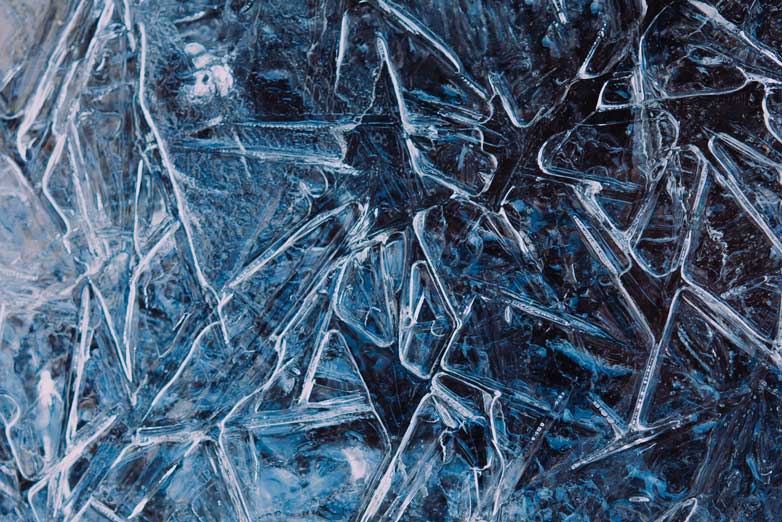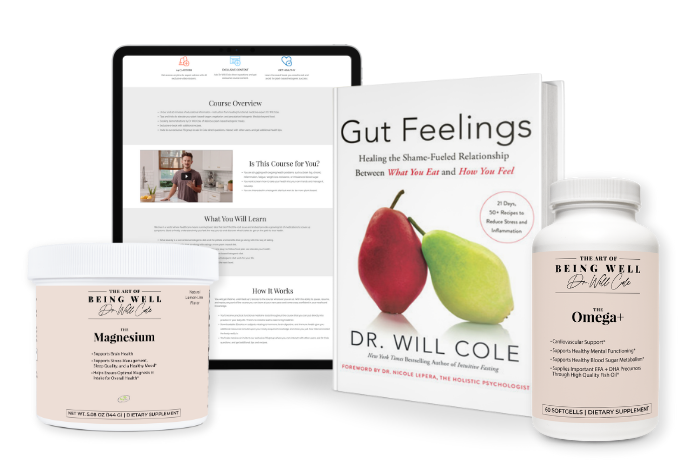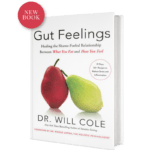Is Cold Therapy Worth It? A Functional Medicine Guide To Cold Plunges, Cryotherapy + More

Driven by the wisdom of ancient practices and supported by modern scientific research, cold therapy offers a myriad of advantages for both the body and mind. From reducing inflammation and boosting immune function, to fostering mental clarity and resilience, cryotherapy, cold plunges, and other cold therapies have long been touted for their ability to help enhance your health for the better. In fact, Hippocrates, the father of Western medicine, first prescribed the use of cold treatment to reduce swelling and pain back in 400 BC.
So even though cold therapy is not a new concept, cold plunges - a type of cold therapy - have been put centerstage by many influencers, fitness experts, and wellness gurus talking up for their transformative benefits. And as a functional medicine expert, it’s my job to try out whatever new wellness trend is on the rise in order to give you the inside scoop as to whether it is worth your time and efforts to add into your health routine.
What is cold therapy?
Cold therapy encompasses a range of techniques designed to expose your body to controlled cold stimuli in order to trigger a cascade of physiological responses with a multitude of benefits.
Blood vessels in the skin and peripheral tissues constrict to conserve heat and protect vital organs. As your cold session ends and your body returns to normal temperatures, blood vessels dilate, leading to increased blood flow. This "vasoconstriction" and "vasodilation" cycle is believed to promote numerous health benefits. While there are many ways to practice cold therapy, these are a few of the most popular options.
Cryotherapy
There are a few different types of cryotherapy, but one of the most common is whole-body cryotherapy (WBC). During a WBC session, you enter a cryotherapy chamber or room, which is cooled using liquid nitrogen or refrigerated cold air. The temperature in the chamber can drop significantly, typically ranging from minus minus 166°F to minus 256°F. Each cryotherapy session usually only lasts two to four minutes in the chamber where your skin surface temperature drops significantly.
Cold plunges
A cold plunge, also commonly referred to as an ice bath, involves submerging as much of your body up until your head in cold water for approximately 3-5 minutes. The water temperature in a cold plunge is typically much colder than what most people would find comfortable for regular swimming or bathing - usually around 40-60°F depending on your level of experience. Cold plunges have been used for centuries in various cultures, particularly in Scandinavian cultures where you alternate between hot saunas and cold plunges in ice water.
To get $150 off your own at-home cold plunge tub, use the code "drwillcole" at checkout!
Even everyday things like cold showers and ice packs are also considered forms of cold therapy as they still work to lower your body temperature as a whole or in a targeted area.
Benefits of cold therapy
But the real question is, why would you want to voluntarily freeze yourself even for just a few minutes? Although the research surrounding cold therapy is relatively new, we can see from emerging studies that it has a surprising amount of benefits both long and short-term.
1. Reduces inflammation and pain
Cold therapy has been shown to combat inflammation and pain and with targeted cold therapy compresses to be effective (1) at alleviating pain from musculoskeletal injury and delayed-onset muscle soreness (DOMS). Another recent study (2) even found that cold plunges were able to significantly improve pain levels and joint mobility in people with Gout arthritis - an inflammatory autoimmune condition.
2. Enhances post-exercise recovery
For anyone who is physically active, post-exercise recovery is a crucial aspect of performance and overall well-being. Cold therapy plays a vital role in optimizing recovery by reducing muscle inflammation and promoting efficient tissue repair, with studies showing (3) that undergoing cryotherapy after exercise can help improve markers of muscle damage including lactase and inflammatory biomarkers like IL-6. Additionally, cold therapy stimulates blood circulation, allowing essential nutrients and oxygen to reach the muscles faster, promoting quicker healing and recovery.
3. Boosts metabolism + helps weight loss
Our metabolic rate plays a significant role in maintaining a healthy weight and overall energy levels. Cold therapy has been found to activate brown adipose tissue (BAT), also known as brown fat, which is responsible for generating heat and burning calories. Unlike white fat, which stores energy, brown fat burns calories to generate heat and maintain body temperature. Exposure to cold temperatures stimulates BAT activity, (4) contributing to increased calorie expenditure and potentially aiding in weight management efforts.
4. Alleviates stress + improves mental clarity
In our modern world filled with constant stress, finding moments of calm and mental clarity is essential for our well-being. Cold therapy has been shown to trigger the release of endorphins, the body's natural mood-enhancing chemicals. These endorphins promote a sense of well-being and act as natural stress relievers, helping to alleviate anxiety and enhance your mood.
5. Supports your immune system
While studies around cold therapy and it's relationship to immunity are limited, initial research has found (5) that participating in regular cold plunges can positively affect inflammation levels and activate T and B lymphocytes - two types of white blood cells that act as the defense mechanisms of your immune system.
6. Improves circulation
Cold therapy has a profound impact on our circulatory system, promoting healthy blood flow and enhancing cardiovascular health. When exposed to cold temperatures, our blood vessels constrict, and as we warm up again, they dilate, creating a "pumping" effect that improves blood circulation throughout the body. This enhanced circulation delivers vital nutrients and oxygen to various organs and tissues, supporting their optimal function.
Side effects
While cold therapy can offer numerous health benefits, it’s important to remember that not every therapy is going to work for everyone. If you have poor circulation, diseases like peripheral vascular disease, Raynaud’s syndrome, are pregnant, or heart problems, it is essential to talk with your doctor before trying cold therapy. When starting anything new, listen to your body and start slow.
The Takeaway
Overall, cold therapy is something I definitely think is worth adding into your regular routine. With benefits like reduced inflammation, enhanced metabolism, improved recovery, and more, there are many reasons why this quick and simple practice is worth the momentary discomfort of low temperatures!
As one of the first functional medicine telehealth clinics in the world, we provide webcam health consultations for people around the globe.
View More At Our Store
Purchase personally curated supplements
and Dr. Will Cole’s books!

- Malanga, Gerard A et al. “Mechanisms and efficacy of heat and cold therapies for musculoskeletal injury.” Postgraduate medicine vol. 127,1 (2015): 57-65. doi:10.1080/00325481.2015.992719
- Kurniasari, Maria Dyah et al. “Cold Water Immersion Directly and Mediated by Alleviated Pain to Promote Quality of Life in Indonesian with Gout Arthritis: A Community-based Randomized Controlled Trial.” Biological research for nursing vol. 24,2 (2022): 245-258. doi:10.1177/10998004211063547
- Bleakley, Chris M et al. “Whole-body cryotherapy: empirical evidence and theoretical perspectives.” Open access journal of sports medicine vol. 5 25-36. 10 Mar. 2014, doi:10.2147/OAJSM.S41655
- van der Lans, Anouk A J J et al. “Cold acclimation recruits human brown fat and increases nonshivering thermogenesis.” The Journal of clinical investigation vol. 123,8 (2013): 3395-403. doi:10.1172/JCI68993
- Janský, L et al. “Immune system of cold-exposed and cold-adapted humans.” European journal of applied physiology and occupational physiology vol. 72,5-6 (1996): 445-50. doi:10.1007/BF00242274
The information on this website has not been evaluated by the Food & Drug Administration or any other medical body. We do not aim to diagnose, treat, cure or prevent any illness or disease. Information is shared for educational purposes only. You must consult your doctor before acting on any content on this website, especially if you are pregnant, nursing, taking medication, or have a medical condition.
Our content may include products that have been independently chosen and recommended by Dr. Will Cole and our editors. If you purchase something mentioned in this article, we may earn a small commission.

BY DR. WILL COLE
Dr. Will Cole, DNM, IFMCP, DC is a leading functional medicine expert who consults people around the globe, starting one of the first functional medicine telehealth centers in the world. Named one of the top 50 functional and integrative doctors in the nation, Dr. Will Cole provides a functional medicine approach for thyroid issues, autoimmune conditions, hormonal imbalances, digestive disorders, and brain problems. He is also the host of the popular The Art of Being Well podcast and the New York Times bestselling author of Intuitive Fasting, Ketotarian, Gut Feelings, and The Inflammation Spectrum.

Gut Feelings
Healing The Shame-Fueled Relationship
Between What You Eat And How You Feel
